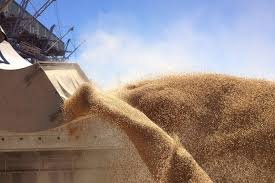Monday, 14 July 2025

Researchers at IIT Kharagpur have developed an energy-efficient pest controlling device for smaller agricultural tracts owned by marginal farmers. The research team has developed a self-propelled boom-type sprayer that can be operated using solar energy while safely guided through the crops in smaller tracts of land. The device is aimed to increase field capacity and uniformity in liquid spraying and also to reduce drudgery to the operator and dependency on fossil fuel for carrying out spraying in cropped areas.
The semi-automated device, developed by Prof Hifjur Raheman, Anup Behera Rahul K and Prof. P.B.S. Bhadoria from the Dept. of Agricultural and Food Engineering at IIT Kharagpur, will address several challenges of a mechanized pest control system in the small farm sector. The system comprises a propelling unit fitted with a liquid storage tank, a DC motor operated pump to pressurize the liquid to be sprayed. Multiple numbers of spray nozzles are mounted on a boom fitted to the front of the machine to cover wider width at a time.
A set of solar-powered battery act as the power source of the DC motor to propel the spraying unit as well as for running the pump. Unlike a knapsack sprayer, the liquid storage tank is of bigger capacity and it is carried on a solar-powered three-wheeler trolley. An operator is required to control the movement of the spraying unit. A simple arrangement has been provided to vary the height of spraying (i.e., nozzle height from the ground) to carryout spraying for different heights of crops. Solar panels are mounted on top of the machine to provide continuous power supply during operation through the Maximum Power Point Tracker controller and it also provides shade to the operator during spraying in the field.
“As compared to conventional knapsack sprayers, the developed sprayer has a higher field capacity and more uniformity of spraying with less drudgery to the operator. It can be easily operated in the field using solar energy with a maximum speed of 2 km/h and can cover a width of 1.5 metres at a time with a field efficiency of 81% thus saving time, human involvement and chemicals,” remarked Prof. Raheman. The researchers have filed a patent for the product and the product is ready for commercialization.